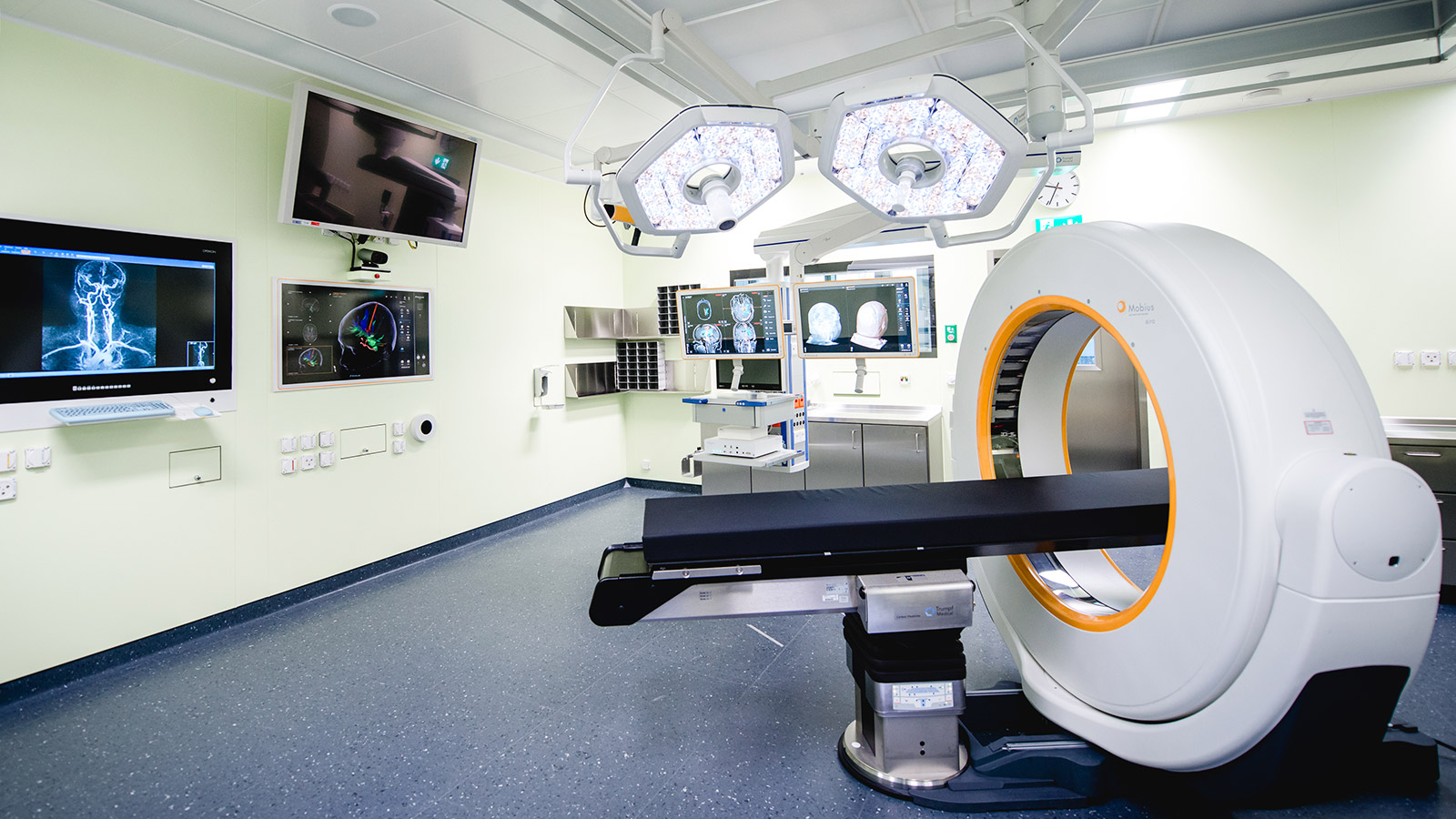Neuronavigation is a computer-assisted procedure that enables precise navigation in the brain and spine. Images from computed tomography or magnetic resonance imaging are processed using special software to create three-dimensional models that are used during surgery. This allows anatomical structures and instrument guidance to be displayed directly on the screen—even during complex spinal procedures.
How has spinal neuronavigation evolved?
Spinal neuronavigation developed from frameless stereotaxy on the skull. Since the spine is very mobile, precise navigation was difficult at first. From the mid-1990s onwards, anatomical landmarks directly on the spine significantly improved accuracy *, *. CT and X-ray-based procedures were later added, in which image data is transferred directly to the navigation system. These advances now enable high-precision procedures on the entire spine.
Higher precision
Spinal neuronavigation increases safety and accuracy in spinal surgery. Studies show that screws can be inserted much more precisely with navigation: in a large analysis, the risk of misplacement was only 6%, compared to 15% with the conventional method – without neurological complications *. Other studies also confirm that navigation enables more reliable and secure screw placement *, *.
Lower radiation exposure
An additional advantage is the significantly lower radiation exposure: thanks to the navigation system, the radiation dose for both patients and the surgical team can be reduced to a minimum *.

How is spinal neuronavigation used?
There are different spinal neuronavigation systems.
In the past, preoperative computed tomography images were combined with 3D X-ray images taken during surgery.
Today, modern navigation software can directly compare the surface of the vertebral body with previously created CT data and transfer the data to the operating room monitor during surgery. This allows the surgeon to see the position of the instruments and of the screws in real time in a three-dimensional image of the spine. This makes spinal surgery even more precise and safer.
At Inselspital: Intraoperative computed tomography (iCT)
In our Department of Neurosurgery, CT-based spinal navigation with intraoperative CT (Airo®) is used as standard. After intubation of the patient and positioning on the operating table, a reference star is attached to the spine before an intraoperative CT scan is performed. The images obtained in this way are immediately available for navigation and enable highly precise placement of screws and implants.
For safety reasons, a second CT scan is performed during the operation. This allows any misalignments to be detected and corrected immediately, thus avoiding the need for repeat operations in many cases. This procedure is also our standard practice for minimally invasive spinal surgery.
-
Shin BJ, James AR, Njoku IU, Härtl R. Pedicle screw navigation: a systematic review and meta-analysis of perforation risk for computer-navigated versus freehand insertion. J Neurosurg Spine. 2012;17:113-122.
-
Richter M, Cakir B, Schmidt R. Cervical pedicle screws: conventional versus computer-assisted placement of cannulated screws. Spine (Phila Pa 1976). 2005;30:2280-2287.
-
Fichtner J, Hofmann N, Rienmüller A et al. Revision Rate of Misplaced Pedicle Screws of the Thoracolumbar Spine-Comparison of Three-Dimensional Fluoroscopy Navigation with Freehand Placement: A Systematic Analysis and Review of the Literature. World Neurosurg. 2018;109:e24-e32.
-
Schuetze K, Eickhoff A, Dehner C, Schultheiss M, Gebhard F, Richter PH. Radiation exposure for the surgical team in a hybrid-operating room. J Robot Surg. 2019;13:91-98.
